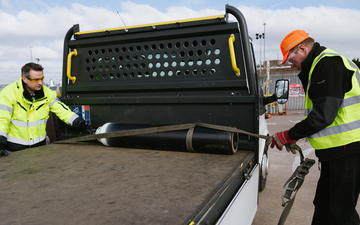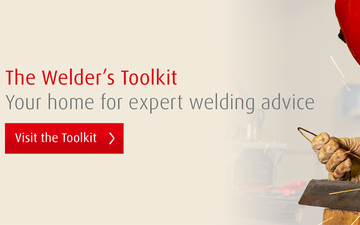- Official BOC UK Online | Industrial Gases | Products & Solutions | BOConline UK
-
Shop
- Industries
- Processes
- Gases & Equipment
-
Solutions
-
Services
-
Health & Safety
-
Contact & Support
- What's Happening
-
Net Zero Strategies
How to: Handle and Store your Cylinders Safely
Posted by BOC

If you are using cylinder gas, you’ll need to handle and store your cylinders as safely as possible. In this blog we look at the critical dos and don’ts to keep your people and your premises safe.
Whichever gas you are using, there are some fundamental safety guidelines that apply to transporting, handling and storing your cylinders.
How do I safely transport my cylinder?
When you collect your cylinder from a BOC trade outlet, you’ll be provided with the information you need to fulfil your obligations under the relevant regulation. You should also refer to the British Compressed Gases Association Guidance Note 27 (GN27).
Your driver should also be trained in the hazards your cylinders present, how to handle them safely and the emergency procedures and use of fire-fighting appliances, should an incident occur.
In addition, make sure:
- You are using an open vehicle – and if it is not open, it is at the least very well ventilated
- You carry a 2kg fire extinguisher
- You ensure all cylinder valves are closed and equipment is disconnected
- Your cylinders are secured properly (typically upright) and don’t stick out beyond the sides or end of your vehicle
- You are carrying the Safety Data Sheet for the gas you are transporting.
If you suspect a leak while transporting your gas, you should park in a safe, well ventilated location and contact BOC immediately.
How do I safely handle my cylinder?
When you get to your destination, make sure you unload your cylinder as soon as possible. Never roll a cylinder along the ground – instead you should use a suitable cylinder trolley, checking that your cylinder is secure before you move it and that there is no equipment attached.
You should always wear protective gloves and footwear and keep your eye on your cylinder at all times – never turn your back before it’s secured, and NEVER attempt to catch it if it falls.
It’s particularly important to understand the roles that cylinder valves and caps play in keeping your cylinders safe.
- All BOC cylinders containing high pressure gas are fitted with a high-pressure cylinder valve which must NOT be removed or tampered with
- Some cylinders have a security cap over the cylinder valve showing that they have been filled and checked. This can be split and removed by rotating the hexagon nut using the regulator spanner
- Each valve outlet is threaded to receive a pressure regulator suitable for the gas type (which you can pick up from your Gas & Gear outlet.) This can be screwed in by hand and then tightened using the regulator spanner
- When your cylinder valve is open or in use, your cylinder key should remain in the valve in case of emergency. You should never leave an opened spindle of a cylinder valve against the backstop. Instead turn it back at least half a turn to avoid seizure in an open position.
- You should never tamper with cylinders in any way – never attempt to repair one if it’s damaged, never mix or try to transfer gases between your cylinder and another, and never scrap a cylinder you don’t own.
How should I store my cylinder?
After your cylinder has arrived at your premises, it is critically important that it is stored safely. Some gas cylinder products have their own specific storage requirements so it’s worth checking the British Compressed Gas Association (BCGA) Code of Practice 47 for more information.
In general, your cylinders should be stored:;
- in a well-ventilated, covered area, preferably outdoors, on a level, well-drained concrete surface
- vertically and securely, to prevent them from toppling over
- separately, according to their different properties (e.g. flammable, inert, oxidant etc.), with toxic gases kept away from all others
- away from other materials such as fuel, oil, wood, paint or corrosive liquids
- apart from empty cylinders, with the oldest ready and available to use first.
Be aware too that gases that are liquified or heavier-than-air such as Propane may lead to pockets of gas being created at low levels such as in drains, basements, or ducts.
Importantly, if you are also storing LPG such as Propane cylinders, these MUST NOT be stored with your other gas cylinders.
Please note: cookies must be enabled to view the video. If you do not see the video, please click on ‘Cookie Settings’ and enable Cookies in your browser.
Download our quick guides for more advice
The Welder’s Toolkit contains more guidance on cylinders, including this quick guide, which contains more detail and useful resources on transport, handling and storage, and the video above, which gives a brief overview of some basic safety guidelines.

